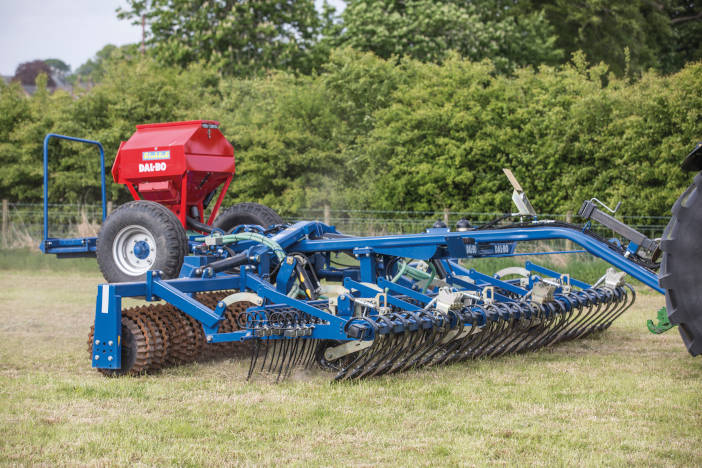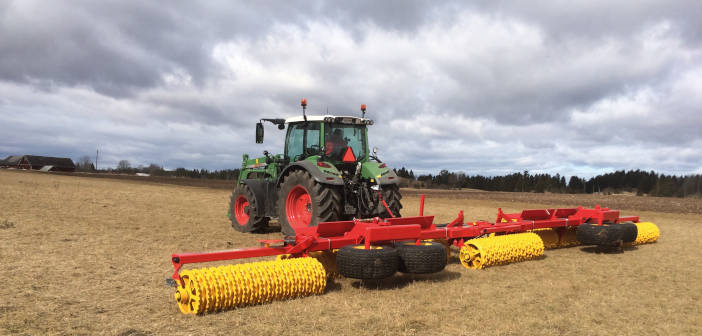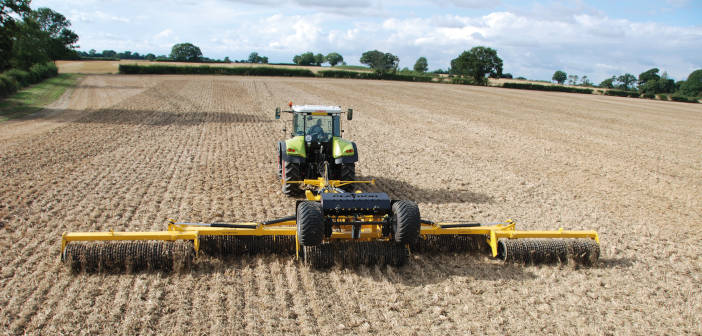A set of Cambridge rolls could well be considered a small part of a farmer’s establishment equipment, but they are still essential even in this time of reduced tillage. John Swire takes a look at what is available.
“There are three main reasons why a set of rollers are still an essential part of the farmers armoury,” says agronomist Damian McAulay of Indigro Ltd. “Firstly, once the crop is drilled it is essential that the soil is allowed to retain its moisture and also be in contact with the seed to give it the best chance of germinating. Secondly, if you are going to be using a pre-em residual herbicide you need a good flat surface on which to apply it, indeed some growers have their Avadex applicators attached to their rollers for this very purpose. Finally, a good rolling following drilling is very important when it comes to slug control. This has become quite obvious over the last two seasons when it has been too wet to roll, following drilling which has led to poor crop germination and subsequent poor yields.”
So then, what is currently available to todays arable farmer or contractor? Claydon’s Spencer Claydon says: “We have available offer three sets at 6.3m, 8.3m, and 12.3m which have been specifically manufactured to allow farmers to effectively roll after strip seeding to ensure the crops are given an uncompromised start.
“The 2.5m sections fold up horizontally to under 2.85m for road transport. With a low centre of gravity and excellent visibility the Claydon rolls are safe and stress-free to manoeuvre in-between fields. Light boards are fitted as standard. Setting up the rolls for work is simple and straightforward and can all be done from the tractor seat. Three sets of spool valves are required to unfold the machine. There is an option to fit the rolls with a Claydon stone box for carrying stones to the edge of the field, or for holding tools. For optimum performance the operator will leave the centre ram in float and the wing rams pressurised.”
With a weight of 8400kg spread across 12.3m means the Claydon Rolls are applying 682kg of pressure per metre. The Claydon load transfer system ensures the rolls deliver uniform consolidation across the whole working width of the machine. 24inch (600mm) breaker rings working on a 60mm shaft allow the rolls to consolidate down in the seeding rows, creating an uncompromised finish. With no more than 120hp required, the Claydon 12.3m rolls will achieve outputs of 6.63 hectares per hour driven at 6kph. The 12.3m rolls work perfectly with 24m tramlines and reduce tractor wheel passes on the field to a minimum.
According to Steve Atkin of Dal-Bo, the roller is the cheapest cultivator on the farm: “Its versatility is something that growers want. The MaxiRoll is the new generation of rollers from DAL-BO which has been driven by changes in agricultural practice over recent years.

“The MaxiRoll is a heavy-duty build of roller, which by using many of the available options can be used in a number of applications. In addition to traditional rolling tasks after drilling, the MaxiRoll, when fitted with a hydraulic cracker board, is the perfect implement for preparing a seedbed and other soil levelling applications, thus making the MaxiRoll a very versatile machine. MaxiRoll 10.30 and 12.30 consist of 5 sections, and equipped with hydraulic suspension and can follow the ground contours perfectly. Even with this wide working width, optimum soil contact is achieved over the full working width. MaxiRoll can be fitted with a hydraulic cracker board or harrow. Other options are available to mount to your three-section MaxiRoll to enable you to have a system to suit your needs.”
Väderstad offers two models, The Rollex 450-620 is available in 4.5, 5.0 or 6.2 metre working width. It has a strong frame, maintenance-free joints, hardened bushes and high-quality roller rings. It is also fitted with micro-alloyed special steel and unique spring plates between the roller sections to avoid wear.

The Rollex also has Cross Board levellers which allow for any clods to be crushed and soil is levelled. A double-acting stabilising bar increases levelling capacity. The CrossBoard is equipped with master and slave cylinders, which ensures a level work result by maintaining the position of each CrossBoard section.
With the addition of the Väderstad BioDrill the Rollex can be turned into a seed drill able to sow leys, catch crops and other small seeded crops together with the rolling operation. The seed nozzles ensure an even spread in front of the roller. The roller then buries the seeds in the upper topsoil, where the conditions for germination are optimal.
Also available from Väderstad is the Rexius 650-1230, which is a heavy-duty roller available in 6 different models from 6.5 – 12.3 metre working width. The Rexius has a heavy-duty construction, resulting in a long working life. It has a weight of up to 650kg per working metre giving it improved consolidation. Also, to ensure an even load on the outer section of the wider Rexius models, a heavy-duty spring transfers weight from the neighbouring sections. These further guarantees that stones are effectively pressed down, without compromising the levelling result. Since there is an even load distribution over the other sections, it also eliminates the need for hydraulic weight transfer.


